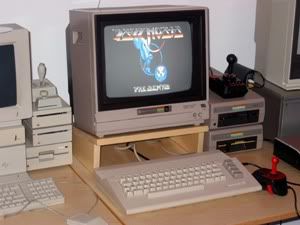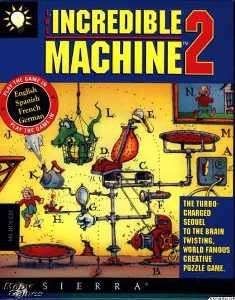Why are most games based on destruction
and violence? Is it really true that we are
more prone to destruction than to creation?
Constructive gaming
Is it true that we are more prone to destruction then to construction?
Why is it so?
Who hasn't wanted to, if not in fact make a whole game, then at least change or add something that already exist in some games, mostly to some bad games or to those that particularly have grown near our heart. In the early time of home gaming, in the early eighties of the twentieth century, the consoles were almost not even present in the homes of players, because the possibilities (especially the graphics and sound) of home computers, such as the ZX Spectrum, Commodore 64 and Amstrada (Schneider) 464 or 664 were much larger than from the existing consoles only designed for playing. Each of the home computer, by switching on, were immediately offering possibilities of programming in the BASIC programming language, so that most players of that time, have at least tested themself in the first steps of programming. However, the arrival of newer machines, such as the Atari ST and Amiga, things got more complicate because the installation of such a programming language as a basic operating system would be a step backward, so they gave the computer menus, so-called disk operating system, like Amiga DOS and Atari TOS. Since almost till the mid-nineties the PC computers, with cards that supported a maximum of 16 colors, were graphical completely useless, but also multiple expensive than the Atari ST or Amiga, so that they weren't interesting for an investigation of creativity in designing new or modifying existing games.

The Commodore 64, people who were using computers in that time probably have experience with the first steps of programming.
Since programming is not so easy that anyone could catch him without hard time, especially on modern systems, whose structure is becoming more complex, many companies were searching for ways to bring the creative dimension of videogames to a wider circle of people/consumers. One of the first widely accepted commercial tools for home use was Adventure Construction Set, which enabled graphical adventure with a view from a bird's perspective, and went out in 1985. for the Apple II and Commodore 64, one year later for the Amiga. DOS version (for PC computers) came in 1987. Another tool worth mentioning is the Sensible Software SEUCK (Shoot 'Em Up Construction Kit), which were released in 1987. for the Commodore 64, Atari ST and Amiga, and as his name suggests, he allowed the creation of various types of shooters, and because of his diversity received very good critics. Since at that time the Internet was just in the form of U.S. military networks, and was not yet even considered for public use, the game made with these tools were distributed by various specialized magazines on a disk that were a special attachment, which later became a CD and DVDs, or BBS's, systems that are accessed directly through modem, something like today's web sites, but completely independent and isolated computer systems.
"Do we always have to obey to the wishes of the original game creators? Why don't we sometimes wake the little spark of creation and creativity who live in each of us?"
These tools are, even when they came with examples of games, only tools, and like so, were very interesting only to a narrow gaming audience, because the tool is not part of the game, but the game is a product of the utilization of that/those tools. It is Jeff Tunnell and his team who understood that, and in 1995. in his sequel to the game The Incredible Machine he added the possibility to the costumers to create their own mechanisms (levels) in the game, and in the third part that mechanism had been improved so much that it has become as fun making your own mechanisms and sharing them with you friends and let them solve them as it was playing the levels that have been made by the game creators themself.

The incredible machine, the game that fused tools and entertaining.
From the current view it is clear that the possibility of using such concepts nowadays is much better, but it took really a lot of time to game manufacturers begin to apply these concepts, especially in games on consoles. It is clear that all these options fully opened only when the connection to the Internet has become an integral part of every console, not just an additional option. One of the first examples of the participation of players in the creation of content for games is the online competition in Burnout Paradise, of which some of the most interesting is even included in the official list of the online challenges. However, the biggest step has been made by the company Media Molecule and there fantastic game LittleBigPlanet, in which is making your own levels and share them with other players around the world become more important and fun then the levels made by the creators of the game itself. The approaching to the level creator is so easy and fun that it would be a shame for every owner of this game not to, at least, play a few levels that are created by other players, and their diversity will undoubtedly encourage anybody in who can be found the smallest spark of creativity to try to make there own vision of a platform games, and perhaps even some other genre, because among the user works there, there are even some level of full-blood shooters. The interesting part of this project is the evidenced of the large number of levels that have been made by users, somewhere is even mentioned a number which is greater than eighty-five thousand, only two weeks after the official release of the game on the market. We hope that more and more publishers are going to follow the example of LittleBigPlanet, and that they will include as many players possible in the creation and life of their games. Why, for example, we might not in the near future create ourselves multiplayer levels for FPS's, perhaps new adventures of Lara Croft or tracks on which we will race and compete in some newer generations of games?
Anel Zukic
______________________________
In the flame of creativity...